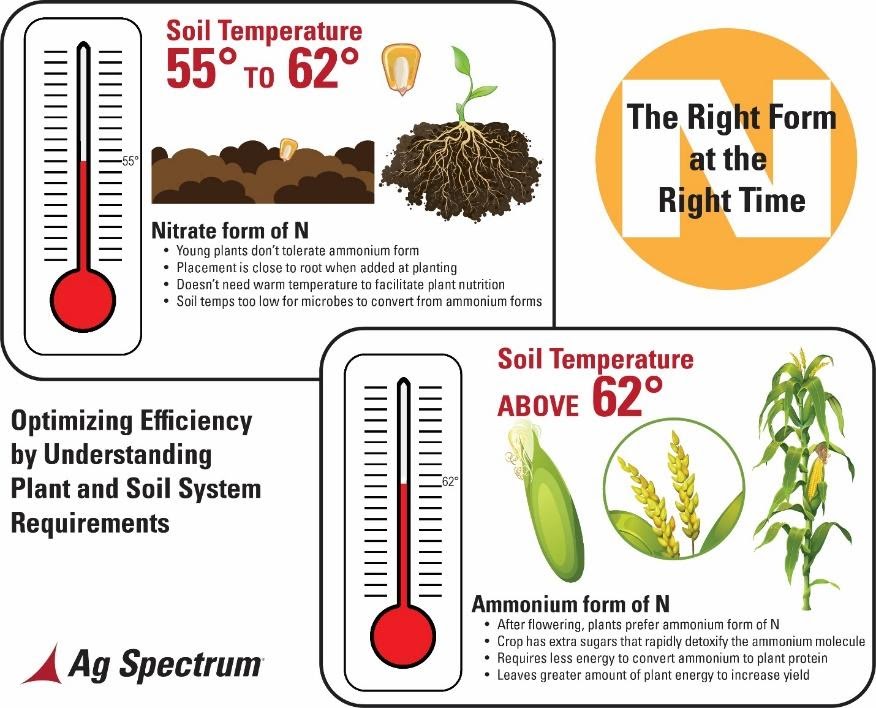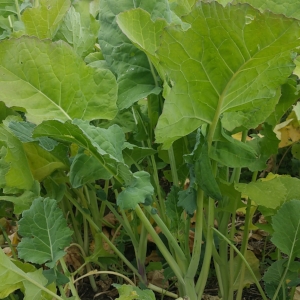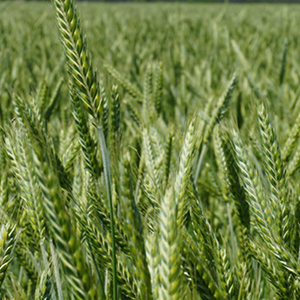

Maximum Farming System
The Maximum Farming System® is an integrated systems approach to farming. Ag Spectrum professionals developed Maximum Farming by combining scientific research results with practical, in-field knowledge, paying close attention to what makes crops grow best.
The Maximum Farming System has proven successful over the past 30 years, but it’s not only in the traditional sense of crop yields. Maximum Farming addresses the whole production environment for a healthy crop. It starts with the soil and establishes a nurturing and nutritious seed bed in which the plant can grow. The soil can even be improved, despite a long-held belief that we will run out of rich, fertile soil in the near future. Establishing the right product, timing, placement, quantity and form of additional nutrients allows a growing plant to capture and maximize energy from the sun and transform it into a nutritious crop. This ultimately enhances livestock and human health.
Mission & Values
Our Vision
Ag Spectrum is dedicated to understanding the basic truths of science, investing in ongoing agronomic research, and providing leadership and education direct to the farmer, to inspire progress in American agriculture.
Progress in agriculture is achieved by maximizing returns on every investment, where no nutrient, no pest management product, no water, and no effort goes to waste.
Although we have been in business for more 30 years, the marketplace has only initially begun to address global needs and embrace changes in agricultural production practices. We believe in educating farmers with a complete systems approach because we have the opportunity and responsibility to leave things better than we found them.
Our Values
There are four primary core values that drive Ag Spectrum and the Maximum Farming System:
- Systematic Approach
- Education and Learning
- Research and Basic Science
- Maximizing the Grower’s Profitability
Ag Spectrum’s approach begins with basic science and research. The fundamental beliefs as to how a plant grows, the stresses it faces, and how to provide maximum energy to the plant in the right form, at the right time. Ag Spectrum has an on-going investment in non-biased, fundamental research. These researchers are an extension of the Ag Spectrum network.
The researchers present the research to the dealer network in the form of company and customer meetings, print publications and other communications. The dealer network in turn provides value to farmers by sharing un-biased research and instrumental findings that will help advance their operations and improve profitability.
Plant Requirements
Our approach is founded on basic science, and our system has the basic requirements needed for plants to achieve maximum potential. These requirements focus on developing the proper soil, making essential nutrients available, and having sufficient energy from the environment.
Specifically, plants require the following to reach their maximum potential:
- Water in the soil that contains dissolved oxygen
- Nutrients in the proper concentration during each specific development stage
- Optimized microbial community in the rhizosphere
- Absence of toxins
- Optimum amount of sunlight, carbon dioxide, and the right temperature
By establishing these requirements, the root system can fully develop allowing the plant to obtain the maximum amount of nutrients needed to grow. The Maximum Farming System focuses on establishing these basic requirements from the very beginning, while continually enhancing plant development throughout the growing season.
Advancing Science
Ag Spectrum partners with a multitude of independent researchers across the nation who have a variety of specialties. For the past 30 years, advancements to the Maximum Farming System have been implemented based on research conducted by the collaboration of these scientists.
“Typically, funders come to us [researchers in general] with a jug and a hat and ask us to test their products. If we’re lucky, they will also provide a small amount of funding that can help to support our research,” shared Dr. Brown.
“Ag Spectrum is different, and takes a unique approach to their investment in research. As a company, they are more interested in advancing basic science, than they are about testing and proving the validity of their products,” says Dr. Patrick Brown, Professor of Plant Sciences at the University of California Davis.
The majority of the industry has shifted to this mindset because it allows companies’ technology to be tested by an “unbiased” third party. For researchers to make real discoveries and progress in understanding basic biology, however, they must find their own funding to support basic research, which is increasingly difficult due to continued decreases in public funding.
That’s why Ag Spectrum believes in advancing basic science to gain a deeper knowledge of how and why plants perform and develop. We are heavily invested in research that leads to greater understandings that will benefit the entire agricultural community.
Empowering Growers
At Ag Spectrum, we partner with growers to first understand their priorities and challenges and then provide leadership to help them make difficult decisions. Success in agriculture isn’t measured solely by the number of acres one has or the yield results achieved. Rather, success is measured by the plans we make, and the ultimate commitment to achieving our goals. At Ag Spectrum, we define grower success as:
- Growing healthier crops
- Achieving higher yields
- Regenerating the soil so continued profitability is attainable.
- Setting & achieving goals that will further advance their operation for the long-term.
Empowering Growers
In order to have healthy soil, farmers must make sure a favorable root environment exists, since roots are the primary conduit for acquiring essential nutrients and water. A favorable root environment involves oxygenated water, adequate and available nutrients accessible by plants, appropriate microbial activity, and the absence of toxins. Determining if favorable root conditions exist can be evaluated through soil testing. Results from the soil tests provide a baseline for understanding what nutrients are available, how active the root environment is, and what can be done to alter the root environment to the farmer’s advantage.
There are many factors that may cause problems regarding to soil health, however, having a systems approach to soil, air, and water can provide solutions to many of these problems. Ag Spectrum has participated in ongoing studies of air and water management at the USDA National Soil Erosion Research Laboratory at Purdue University. This research has led to recommendations that reduce hardpan, compaction, and soil erosion, while improving drainage and the exchange of air and water in the soil. We believe in using this information to not only improve the soil environment for the next crop, but to leave a legacy and enable productive soils for the future.
Foliar Nutrition
Leaves are the above-ground part of a plant that absorb nutrients, which is why we believe in applying foliar nutrition. Over the years, Ag Spectrum has funded extensive research on foliar feeding and has discovered that when the proper materials are absorbed through a plant’s leaves at the right time, energy production is sustained, yields increase, and soil test values improve.
Our proven materials, such as Kick-Off®, Clean Start®, Score®, PT-21®, GroZyme®, and GlyCure®, supply plants with the right amount of nutrition that they need and have shown great success in producing quality crops. Foliar nutrition can be applied during any condition that initiates stress, such as temporary limitation of root uptake. We apply our foliar nutrition to crops at very specific times for optimum success. Foliar feeding is a sound practice that has shown consistent results and our system encourages using foliar nutrition on every acre, every year.
Recommended Articles for Your Reading
Biogeochemistry of Phosphorus in Midwestern Mixed Clay Soils
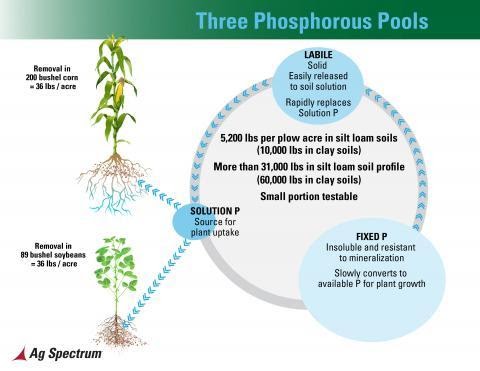
by Cliff Ramsier, Technical Director
Much of the fertilizer world believes that corn yield is directly related to the amount of soil test phosphorus. In an environment where every dollar matters, proper understanding and use of phosphorus can improve yield and profitability.
Most of us understand that substantial quantities reside in soils (400# in sandy loam soil to more than 10,000# in clay loam soil) in each plow acre at 62/ 3 inches deep. This translates to 2,400 to 60,000 pounds in the total soil profile. While only a very small portion of this is soluble, it does represent the amount of potentially available phosphorus once mineralized, if the soil environment is properly managed.
The three phosphorus pools in soil environments are solution, labile, and fixed or stable. The solution pool is the source for plant uptake. While this pool is only a very small fraction of the total phosphorus in soils, it is replenished as many as 500 times throughout the growing season when soil biology is functioning at optimum. The principle source for the replenishment of solution P is from the labile pool. This pool contains phosphorus in forms that are relatively easy to convert into soluble forms. These forms include organic P that is easily mineralized by enzymes, and inorganic P that is adsorbed into the surface of soil particles and as calcium phosphate, etc. Since these forms are not soluble, the organic forms must be degraded by enzymes (phosphatase) and the mineral forms must be solubilized by acid formation generated by soil organisms. Both of these processes are biological processes and, therefore, are regulated by the relative conditions for biological activity. The final pool is the hard mineral phase, which requires very strong acids for long periods of time and, therefore, this pool is resistant to mineralization. This mineral pool consists mainly of iron and aluminum phosphates which are very strong bonds.
Phosphorus arrives at the plant root via concentration gradient, which means that it moves from the point of dissolution to the root very slowly and along a tortuous path where it can easily be precipitated. This makes the presence of mycorrhizal fungal association on the root very helpful. Once the extended fungal hyphae have captured the phosphorus, the fungus transports it directly to the plant. This is another benefit of a biologically-active soil. We apply Clean Start® in the seed trench to reduce the distance the phosphorus needs to travel for uptake.
As a reference, P1 is an indicator of the P in solution and P2 indicates the portion of the labile pool that is relatively easy to solubilize to P1. These are purely chemical extractions and, therefore at best, an estimate of what will really happen during the cropping season. As has been the experience of most growers, soil test values of P1 & P2 have very little impact on crop production. On the other hand, the condition of the soil, relative to biological activity, is more closely related. Real soil quality is measured by the portion of yield that is delivered by biological activity as compared to that which is caused by adding fertilizers.
This is really a complicated system that, when fully appreciated, is both easy to manage, and an excellent example of a perfect design. It is a design that allows for plant nutrition over eons of time without causing off-site problems. As has been said before, soils are designed to last a humanity. This is simply another example.
A Burgeoning Revolution: Agriculture Needs Focus on Soil Health
Geology without biology is dirt. Put the latter to the former, add a focus on building for the future, and you have a system of geology and biology to make soil. You may even have the makings to sustain humanity for generations to come.
That’s the easy way to explain Dr. David Montgomery’s presentation to the Maximum Farming Club Conference attendees in January. The path humanity has taken to make so much dirt of its soil and what it will take to spark agriculture’s potential next revolution is more complex. It is; however, he believes, a doable goal if agriculture is willing to change.
That is why society must pay attention to the loss of productive soils, put focus on restoring what is there, and getting the most out of what soils have to offer. At times, it was like listening to a tutorial on the Maximum Farming System.
Montgomery used his trilogy of books, “Dirt”, “Growing a Revolution”, and the book he co-wrote with his wife, Ann Biklé, “The Hidden Half of Nature” as the basis for his presentation. Soils are a strategic resource for mankind, Montgomery says. While most people think of things like oil and energy for strategic reserves, soil may be the most important, and probably the most under-appreciated crisis in terms of soil degradation.
“If we think about what makes healthy soil, it’s the mix of geology and biology,” Montgomery says. “It’s the marriage of those two; the interface between the dead world of geology and the living world of biology.”
Loss of Productive Soils
Soils are responsible for 97% of our food, either directly through plant food, or indirectly through proteins, he says. The other 3% coming from the oceans. That makes the preservation of soils essential to the long-term sustainability of human kind.
Cornell University scientist David Pimental, according to Montgomery, discovered in 1995 that one-third of the world’s productive soils had been taken out of agriculture production since the end of WWII; an area the size of China and India combined.
While the degradation rate has slowed, the current pace is that we’ll see one-third of productive farmland go away by the end of this century; daunting figures for a planet that must feed an additional 2 billion people in the next 30 years.
Restoring Soil Health
Montgomery’s research shows worldwide soil conditions in peril where every region of every continent has a majority of soils severely degrading. Conventional farming is the culprit, he says and should be society’s biggest concern.
“How fast the continents have eroded for the last 100,000,000 years or so…those are all about a percent or two of a millimeter a year. That’s 100 times slower than rates of conventional erosion off plowed fields as a global average. That’s the problem.”
The table also shows the solution, in Montgomery’s mind, and that is a conversion to more conversation about tillage and specifically no-till. Then comes the focus on rebuilding soil structure.
Through his research, he visited with farmers all over the world, including the United States and Africa. But the idea was sparked by the restoration of his own yard in north Seattle, Washington.
“You know, we basically had an old growth lawn and, when we stripped that lawn off,” he says. “We found that we had glacial till— we had dirt. There wasn’t a single worm living in there. There was no microscopic life visible at all.”
Fast forward four years and they have about two inches of new top soil. “Nature doesn’t do it that fast, but we can.”
This brings the discussion to how we apply an understanding of soil ecology and the quest to build soil, not just in their yard, but across all regions where soil degradation is happening.
“I think this new revolution can be rooted in the idea of thinking differently about the land,” he says. “It’s not so much about the specific tools we might use to get there.
“We can use all flavors of technology and conventional wisdom, but we need to view them through the lens of does it help the health and fertility of the soil as our metric.”
Feed the Soil
“We started to notice the order in which life came back to our yard; microbes, visible fungi, arachnids (spiders), worms and amphibians, reptiles and birds. It mimicked the order in which life evolved on earth.”
That told Montgomery a lot about how ecosystems are built in soils. It’s from the bottom up, as in the root systems. Then it becomes about the parts we can see, and that is why we focus so much on season-long root development with the Maximum Farming System.
Montgomery and Biklé began looking at the processes taking place. They placed organic matter on the soil surface and in six months, it was gone, he says. “Anne said, ‘well, the soil was hungry.’ So, we kept feeding it.”
They were adding compost to the soil surface and the microbes were breaking it down. Then it was further broken down by bacteria and fungi, which are, in turn, eaten by soil organisms. When those organisms are eaten, the waste is excreted as nutrient-rich food for the soil. They were essentially “little bags of fertilizer.”
“They were turning organic matter, which has in it the mineral micro nutrients that are essential for growing plants, because they used to be plants. And they’re recycling that material and turning it into forms that new plants can actually take back up once it passes out the back end of that soil life. It is much more soluble and plant-available than it was when it was leaf.”
Two Way Street
While it’s clear how the soil feeds plants with microorganisms, there’s also another half of the story…the root systems.
“We were trained in grad school to think of the roots as a plant’s straws that brought nutrients out of the soil and suck up water that had soluble nutrients in it. But it turns out that’s only half the story,” Montgomery says.
There are root exudates, and these push food, proteins, sugar and fats, out the root tips and essentially feed the soil, which, in turn, feeds the plant’s root system. It’s a give and take relationship that is mutually beneficial. Montgomery refers to it as an underground economy.
“The rhizosphere extends about one millimeter to one centimeter around every root hair on most plants. That rhizosphere is a zone full of bacteria and fungi. If you want to find some of the most life-dense areas on this planet, look around the roots of a healthy plant. Those plants, with the exudates they’re pushing out of their roots, are basically setting a buffet in the soil and life comes to that plant.
“Those exudates get only about one millimeter to one centimeter away from those root hairs before something consumes them. And what happens when those things get consumed by an organism? Well, it gets metabolized and it gets transformed into metabolites, which is the polite word for waste products.
“So, the plants are pushing food out into the soil. The microbes are consuming them, then the microbial manure that comes out is actually kind of interesting. It’s not just simply elements, they’re elements put together in a way that benefit the plant. You’ve got these micro bacteria in a completely different family of life producing a hormone that makes that other organism healthy. But then the other organism when it’s healthy and it leafs out, it captures more solar energy that is putting more energy back into the soil to feed the microbes. That’s a virtual circle.”
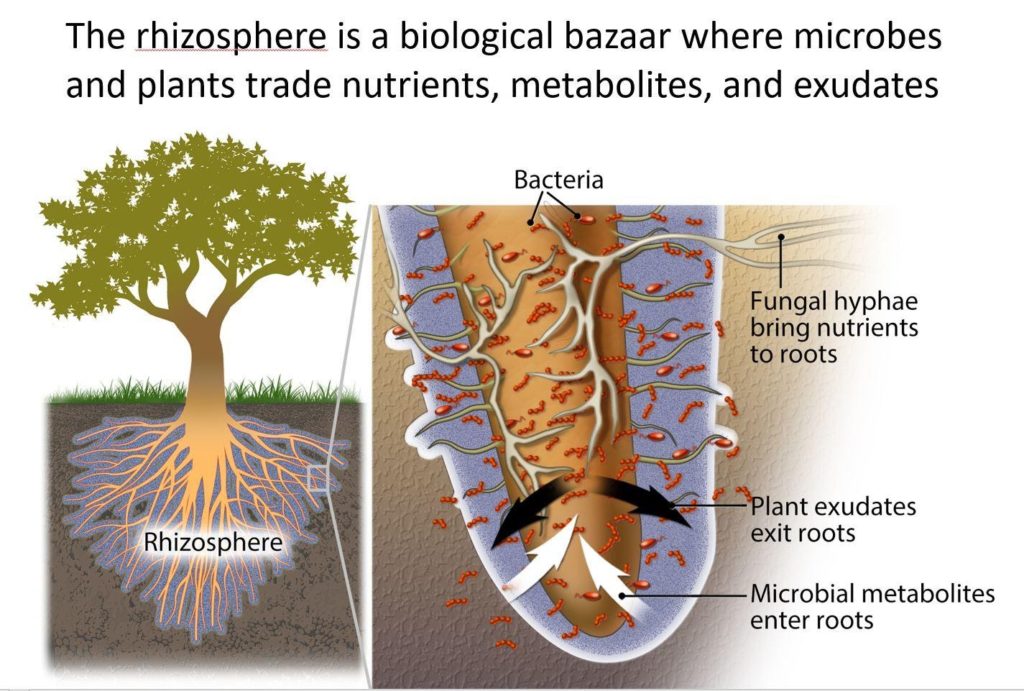
The Illusive Nitrogen
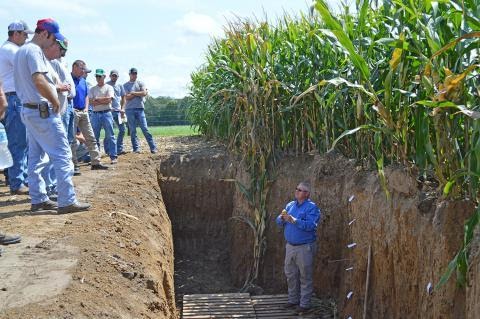
The Right Form at the Right Time
by Cliff Ramsier, Technical Director
All non-legume crops benefit from nitrogen additions for optimum cropping efficiency. As a constituent of all proteins, as well as other plant tissues, nitrogen compounds represent more than three percent of green plant tissue dry weight. Since bio-availability of this nutrient is at the mercy of soil and weather conditions, management is a huge factor in both use efficiency and maximum yields.
Increases in energy prices, as well as concerns about off-site environmental effects, have heightened the value of optimizing nitrogen management. Simply put, growers cannot afford to apply nitrogen that does not ultimately add to crop yields. Since interactions between weather, soil conditions, plant requirements, and raw supply of nitrogen determine use efficiency, managing this elusive input is very challenging. Nitrogen form, timing, and placement are management components that come into play when designing an efficient system for crop production. An understanding of the basic science behind all these factors brings some order to an otherwise chaotic situation.
General plant requirements, relative to ontogeny, suggest that young tender plants benefit from the nitrate form of nitrogen since relatively low ammonium concentrations often become toxic to the small plant. The small young plant usually has an equally small root system, so placement close to the root becomes valuable. Throughout the corn belt, crops are often planted when soil temperatures are below those which enable soil microbes to convert ammonium forms to nitrates, so the form of nitrogen ideally should contain the nitrate form to facilitate plant nutrition. In fact, the microbes that are active when soil temperatures are between 55° and 62° F tend to be those that immobilize ammonium nitrogen (Martens, D. et al 2000). While nitrate is the optimum form for young plants it is also the most mobile form of fertilizer nitrogen in the soil system. This means that, depending on rainfall, nitrates may not last long in the root zone.
As soil temperatures increase above 62° F, microbes responsible for converting ammonium to nitrate proliferate, which assures ready conversion of nitrogen. Of course, by then the growing crop can tolerate higher levels of ammonium, which converts to plant proteins more easily. In the past, most growers have made nitrogen application decisions based on price and convenience. While prices were relatively low for this input, inefficiency was easy to overlook; however, with increasing prices and increasing environmental concerns, growers will benefit from understanding plant and soil system requirements to optimize efficiency.
Virtually every non-legume crop grown in the U.S. that flowers prefers nitrogen in the ammonium form after flowering. The reason for this phenomenon is twofold. First, during these growth stages, the crop has extra sugars available to detoxify the ammonium molecule. Second, the plant energy required to convert ammonium to plant protein is significantly lower than the energy required for nitrates. This means that a greater amount of plant energy is left to go directly to increasing yield, which makes nitrogen use much more efficient.
Since soils are complex and variable, managing nitrogen in them is complicated. Growers who apply nitrogen before the crop is planted are often disappointed to learn that some of the expensive nitrogen, they have applied was not available to the crop during peak demand in plant development stages. This results in reduced yields and low nitrogen use efficiency. Given today’s commodity prices, neither of these results is helpful. While unpopular, multiple applications, forms, and placement, as well as using nitrification inhibitors, dramatically increases both yield and nitrogen use efficiency.
In an attempt to avoid the complexity of nitrogen management in soils, some growers opt for foliar applications of nitrogen solutions. While foliar nitrogen removes the variability of the soil from the efficiency equation, this benefit is offset by the need for multiple low dose applications. Understanding the real value of this technology is the key. First, plant tissue can tolerate only very low concentrations of reduced nitrogen (the form in most foliar nitrogen materials). This limitation would require many applications throughout the season, which reduces the cost effectiveness of foliar nitrogen. While foliar nitrogen applications cannot effectively replace soil-applied nitrogen management, they can and do dramatically improve the response of the plant to soil-applied nitrogen, especially during reproductive plant growth phases. Fruit fill demands on photosynthate usually preclude the crop from significant root growth and development (Nielsen, R. L. et al 2007). Limited root growth (in fact most often roots shrink during fruit fill) reduces the volume of soil that roots can exploit for soil nitrogen. Foliar feeding can reignite photosynthate production, which stimulates root growth and increases the soil volume for nitrogen exploitation. If done properly, foliar nitrogen management increases yield, as well as enhances overall nitrogen and water use efficiency.
The Maximum Farming System emphasizes nutrient form, placement, and timing as one of its primary components. Every Ag Spectrum associate understands that efficiency and uniformity are the keys to crop success. Nitrogen management is an integral consideration of Maximum Farming from planting through harvest and, depending upon the crop, soil type, and moisture level, can include varied and multiple strategies, such as banding, in-furrow placement, side-dress applications, and foliar feeding.
Optimum nitrogen management is not simple or convenient, but it is doable. With an understanding of the basic sciences, a desire to replace convenience with efficiency, and good leadership, a very effective, high-yielding nitrogen management plan can deliver profits to a field in virtually any weather condition for any crop. Are you ready to take the next step to Maximum Farming?
